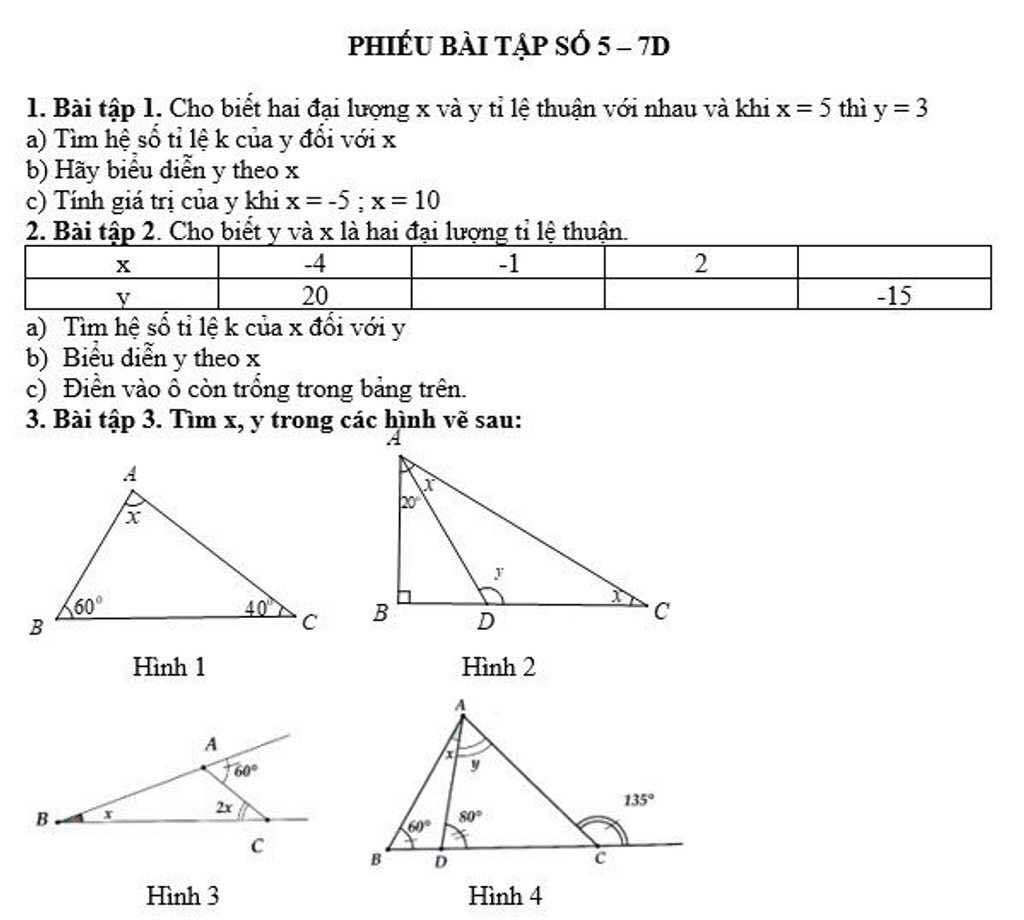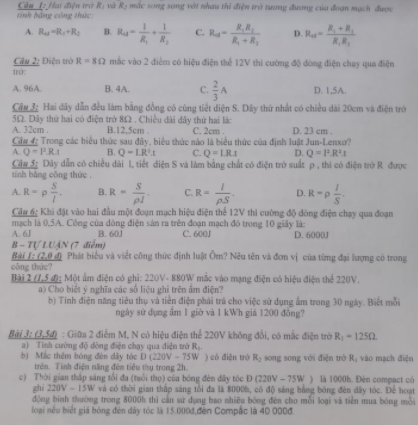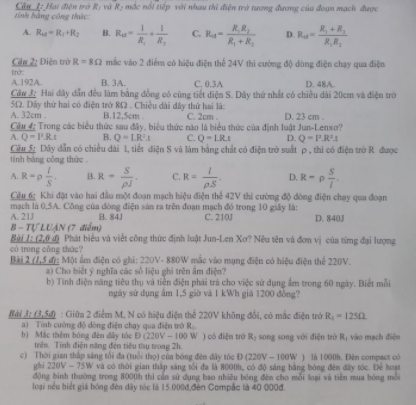Mình cần gấp ạ , tối nay mình cần nộp r ạ

Những câu hỏi liên quan
Mọi người ơi giúp mình 3 bài này với mình cần gấp gấp lắm ạ , tối nay mình phải nộp rồi ạ , cảm ơn mọi người❤️
Tỉ lệ \(x=\dfrac{y}{-5}\)
x -4 -1 2 3
y 20 5 -10 -15
Đúng 0
Bình luận (0)
mọi người giải giúp mình 2 đề này vs ạ, mình cần gấp tối nay mình nộp rùi, cảm ơn mọi người nhìu ạ


Vẽ tam giác ABC có cạnh BC = 4,5 cm ( bằng thước ke nhé )
Mình cần gấp tối nay là nộp giúp mình với ạ
BC = 4,5 cm thì AB = ? AC = ?
Có thiếu đề ko bạn ?
Đây nhé '-'
Vẽ hơi méo,thông cảm
Tam giác này là Tam giác cân nhé
Xem thêm câu trả lời
Viết đoạn văn về dân tộc Tày bằng tiếng Anh
Mong các bạn giúp mình cần gấp ạ =)) (tối nay phải nộp rồi àm mình bí quá xin cảm ơn mấy bạn <3)
The Tay, with local groups Pa dí, Thổ, Ngan, Phén, Thu Lao, is an ethnic group of 54 ethnic groups in Viet Nam. Tay people speak Tay, a Tai dialect of the Tai-Kadai language. Tay people live mainly in lowland areas of northern Vietnam. The Tay was previously known as the Tho (although this name is now used to refer to a different ethnic group, see Turks). Tay people have the second largest population in Vietnam. Tay people, Nung have a close relationship with the Choang people in China.Tay people mainly reside in the northern midland and mountainous provinces (1,400,519 people in 1999). In addition, in the recent time, the Tay also migrated to some provinces in the Central Highlands like Dak Lak and Lam Dong.The Tay are usually at the foot of the mountain or along the stream. The name is often referred to by the name of hills, fields, rivers. Each village has 15 to 20 houses. Large villages divided into many small villages.Tay dressed in indigo. Traditional Tay costumes are made from self-made cotton yarn, dyed indigo on men's and women's clothes, almost without decorative pattern. Tay clothing can be considered one of the simplest outfits of 54 ethnic groups. The costume is simple but meaningful.Then singing, singing, singing sli are used in various activities, popular folk songs of the Tay. Musical instruments such as the Micro, Shake. Chess is an instrument that is present in all spiritual activities of the Tay, such as soul in the folk dance of the Tay. In this life, the sex acts as a means of communicating bold identity.Traditional houses are usually on stilts, lands and roofs with grass and some border areas have defense types. In the house to distinguish male rooms outside, women in the chamber. Most popular are 3-room, 2-roofed houses (no chop), logs of land or bushes, surrounding woods, roofs of grass, picturesque Tay people settle in groups of about 15 to 20 households. Tay people worship ancestors and animals. The Tay ancestors' altar is placed in the middle of the house and made into a private space and revered. Pregnant women and their newborns are not allowed to sit or lie on chairs or beds in front of the altar. In the Tay religion, the most important feast day of the Tay people is usually the last day of the lunar month.The life of the Tay is often associated with nature, so the food and foodstuff of the Tay people are products obtained from production activities in areas with forests, rivers, streams and hills surrounding. Some famous dishes are: sticky egg rolls, sticky rice balls, sour bamboo shoots, stigma.
Đúng 1
Bình luận (0)
The Tay, with local groups Pa dí, Thổ, Ngan, Phén, Thu Lao, is an ethnic group of 54 ethnic groups in Viet Nam. Tay people speak Tay, a Tai dialect of the Tai-Kadai language. Tay people live mainly in lowland areas of northern Vietnam. The Tay was previously known as the Tho (although this name is now used to refer to a different ethnic group, see Turks). Tay people have the second largest population in Vietnam. Tay people, Nung have a close relationship with the Choang people in China.Tay people mainly reside in the northern midland and mountainous provinces (1,400,519 people in 1999). In addition, in the recent time, the Tay also migrated to some provinces in the Central Highlands like Dak Lak and Lam Dong.The Tay are usually at the foot of the mountain or along the stream. The name is often referred to by the name of hills, fields, rivers. Each village has 15 to 20 houses. Large villages divided into many small villages.Tay dressed in indigo. Traditional Tay costumes are made from self-made cotton yarn, dyed indigo on men's and women's clothes, almost without decorative pattern. Tay clothing can be considered one of the simplest outfits of 54 ethnic groups. The costume is simple but meaningful.Then singing, singing, singing sli are used in various activities, popular folk songs of the Tay. Musical instruments such as the Micro, Shake. Chess is an instrument that is present in all spiritual activities of the Tay, such as soul in the folk dance of the Tay. In this life, the sex acts as a means of communicating bold identity.Traditional houses are usually on stilts, lands and roofs with grass and some border areas have defense types. In the house to distinguish male rooms outside, women in the chamber. Most popular are 3-room, 2-roofed houses (no chop), logs of land or bushes, surrounding woods, roofs of grass, picturesque Tay people settle in groups of about 15 to 20 households. Tay people worship ancestors and animals. The Tay ancestors' altar is placed in the middle of the house and made into a private space and revered. Pregnant women and their newborns are not allowed to sit or lie on chairs or beds in front of the altar. In the Tay religion, the most important feast day of the Tay people is usually the last day of the lunar month.The life of the Tay is often associated with nature, so the food and foodstuff of the Tay people are products obtained from production activities in areas with forests, rivers, streams and hills surrounding. Some famous dishes are: sticky egg rolls, sticky rice balls, sour bamboo shoots, stigma.
THAM KHẢO
Đúng 0
Bình luận (0)
The Tay, with local groups Pa dí, Thổ, Ngan, Phén, Thu Lao, is an ethnic group of 54 ethnic groups in Viet Nam. Tay people speak Tay, a Tai dialect of the Tai-Kadai language. Tay people live mainly in lowland areas of northern Vietnam. The Tay was previously known as the Tho (although this name is now used to refer to a different ethnic group, see Turks). Tay people have the second largest population in Vietnam. Tay people, Nung have a close relationship with the Choang people in China.Tay people mainly reside in the northern midland and mountainous provinces (1,400,519 people in 1999). In addition, in the recent time, the Tay also migrated to some provinces in the Central Highlands like Dak Lak and Lam Dong.The Tay are usually at the foot of the mountain or along the stream. The name is often referred to by the name of hills, fields, rivers. Each village has 15 to 20 houses. Large villages divided into many small villages.Tay dressed in indigo. Traditional Tay costumes are made from self-made cotton yarn, dyed indigo on men's and women's clothes, almost without decorative pattern. Tay clothing can be considered one of the simplest outfits of 54 ethnic groups. The costume is simple but meaningful.Then singing, singing, singing sli are used in various activities, popular folk songs of the Tay. Musical instruments such as the Micro, Shake. Chess is an instrument that is present in all spiritual activities of the Tay, such as soul in the folk dance of the Tay. In this life, the sex acts as a means of communicating bold identity.Traditional houses are usually on stilts, lands and roofs with grass and some border areas have defense types. In the house to distinguish male rooms outside, women in the chamber. Most popular are 3-room, 2-roofed houses (no chop), logs of land or bushes, surrounding woods, roofs of grass, picturesque Tay people settle in groups of about 15 to 20 households. Tay people worship ancestors and animals. The Tay ancestors' altar is placed in the middle of the house and made into a private space and revered. Pregnant women and their newborns are not allowed to sit or lie on chairs or beds in front of the altar. In the Tay religion, the most important feast day of the Tay people is usually the last day of the lunar month.The life of the Tay is often associated with nature, so the food and foodstuff of the Tay people are products obtained from production activities in areas with forests, rivers, streams and hills surrounding. Some famous dishes are: sticky egg rolls, sticky rice balls, sour bamboo shoots, stigma.
Đúng 0
Bình luận (0)
mong mọi người giúp mình ạ tối nay là mình phải nộp bài r ạ
Đọc tiếp
mong mọi người giúp mình ạ tối nay là mình phải nộp bài r ạ
Xem thêm câu trả lời
Giúp mình với, mình cần gấp. Sáng mai mình phải nộp r ạ 
Giúp mình với, mình cần gấp. Sáng mai mình phải nộp r ạ 
16 C
17 B
18 C
19 B
20 D
21 B
22 C
23 B
24 C
25 A
26 D
27 A
28 B
Ngủ sớm đi<3
Đúng 3
Bình luận (0)
Giúp mình với, mình cần gấp. Sáng mai mình phải nộp r ạ 
29 B
30 A
31 C
32 C
33 D
34 C
35 A
36 D
37 D
38 B
39 D
40 A
41 C
42 B
Đúng 2
Bình luận (0)
Mình cần gấp ạ giúp m vs
Chiều nay mình phải thi r ạ
Câu 3 :
\(n_{SO_3}=\dfrac{8}{80}=0.1\left(mol\right)\)
\(SO_3+H_2O\rightarrow H_2SO_4\)
\(0.1....................0.1\)
b) Cho quỳ tím vào => quỳ tím hóa đỏ
\(m_{H_2SO_4}=0.1\cdot98=9.8\left(g\right)\)
\(C_{M_{H_2SO_4}}=\dfrac{0.1}{0.25}=0.4\left(M\right)\)
Đúng 1
Bình luận (0)
Câu 2 :
\(n_{Fe}=\dfrac{11.2}{56}=0.2\left(mol\right)\)
\(Fe_2O_3+3H_2\underrightarrow{^{t^0}}2Fe+3H_2O\)
\(0.1.........0.3.........0.2\)
\(m_{Fe_2O_3}=0.1\cdot160=16\left(g\right)\)
\(V_{H_2}=0.3\cdot22.4=6.72\left(l\right)\)
Đúng 2
Bình luận (0)
Xem thêm câu trả lời


























